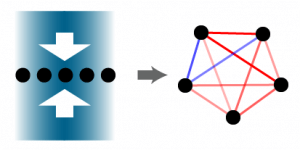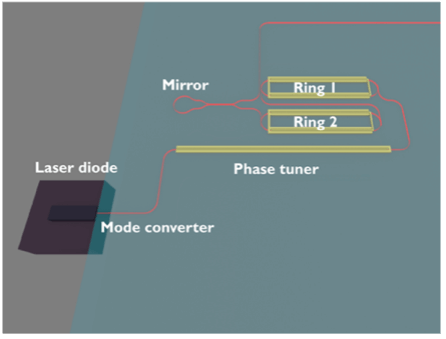Summary
Quantum simulators have the potential to bring unprecedented capabilities in areas such as the discovery of new materials and drugs. Engineering precise and programmable interaction graphs between qubits or spins forms the backbone of simulator applications. The trapped ion system is unique in that the interaction graph between qubits can be programmed, in principle arbitrarily. In the context of quantum many-body physics simulation, a programmable interaction graph will allow us to investigate a wide range of spin models relevant to condensed matter systems and high energy physics. In this project we investigate the feasibility of creating an arbitrary qubit-qubit interaction graph and experimentally characterize the interactions. The robustness of such graphs, including errors from experimental parameters, will be analyzed in collaboration with Roger Melko’s group. We will combine theoretical ideas from quantum information processing and many-body physics, numerical optimization and machine learning techniques, and experimental optical and atomic physics techniques.
This project will enhance the capability of trapped ion quantum simulators significantly beyond the state-of-the-art and will identify a set of concrete many-body physics problems that can be realistically simulated. Altogether these contributions will form an enabling step towards the scalability of a quantum processor.

Figure 1. Trapped ion qubits (black discs) are essentially a fully-connected system. The goal of this project is to engineer and characterize the qubit-qubit interaction graph (represented by the red and blue bonds) using precisely tuned laser beams (blue shades with white arrows).
Related Content

Magnetoelectric Coupling in New Composite Multiferroic Nanostructures as High-Density Quantum Multistate Memory Elements
Summary Magnetoelectric multiferroics are materials that exhibit correlated ferroelectric and ferromagnetic properties (i.e., a magnetoelectric effect). The resulting ability of these materials to simultaneously store data in electric polarization and magnetic moment could increase data storage density and data processing speed while reducing energy consumption. This project aims to design and fabricate new composite multiferroic […]
February 1, 2023

Functionalized Nanodiamonds for Sensing Biochemical Processes
Summary Chemotherapy is limited by the failure to clinically monitor the efficacy of the treatment in real-time, which results in suboptimal chemotherapy being given for a prolonged period. Predicting the outcome of chemotherapy immediately after drug administration can increase diagnostic accuracy, efficacy outcomes, and successful treatment. Quantum nanodiamond sensors can be used as optical sensors […]
August 31, 2022

Visible wavelength external cavity diode lasers in photonic integrated circuits for atomic technologies
Atoms can be controlled by manipulating their internal states using agile, quiet and reliable laser sources. An external-cavity diode laser (ECDL) is a crucial enabling technology to realize such laser sources since it allows for the narrowing of the linewidth of a laser diode and precise tuning of the laser frequency. This project aims to […]
April 19, 2023

Plasmon Control of Quantum States in Semiconductor Nanocrystals
Summary Thanks to the light-induced collective oscillations of free charges at the boundary between a conducting material and a dielectric, known as surface plasmon resonance, metallic nanostructures can exhibit strong light absorption and scattering. The sensitivity of these resonances to the local environment and shape of the metallic structures allows them to be used, […]
March 21, 2018

